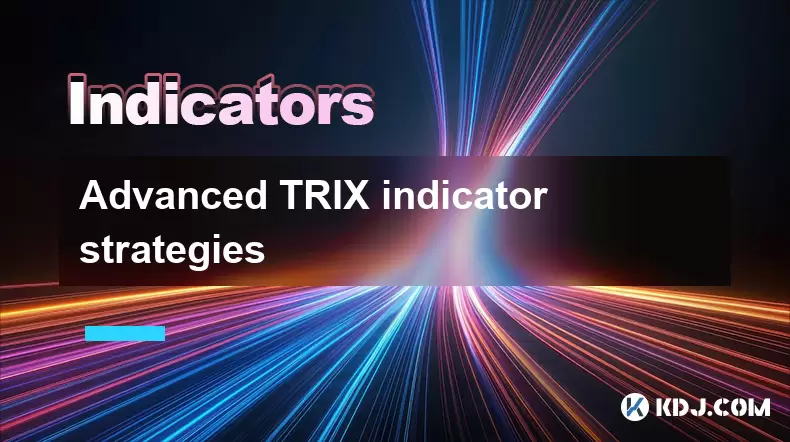-
 Bitcoin
Bitcoin $117,462.8204
-2.03% -
 Ethereum
Ethereum $3,061.1595
1.10% -
 XRP
XRP $2.9139
-2.19% -
 Tether USDt
Tether USDt $1.0002
0.02% -
 BNB
BNB $685.1357
-1.24% -
 Solana
Solana $161.3803
-2.11% -
 USDC
USDC $1.0002
0.04% -
 Dogecoin
Dogecoin $0.1948
-2.92% -
 TRON
TRON $0.2987
-0.89% -
 Cardano
Cardano $0.7330
-1.27% -
 Hyperliquid
Hyperliquid $47.7888
0.13% -
 Stellar
Stellar $0.4514
-2.93% -
 Sui
Sui $4.0169
2.74% -
 Chainlink
Chainlink $15.7088
-2.57% -
 Hedera
Hedera $0.2356
-3.33% -
 Bitcoin Cash
Bitcoin Cash $488.6656
-3.61% -
 Avalanche
Avalanche $21.2955
-1.47% -
 UNUS SED LEO
UNUS SED LEO $9.0415
0.42% -
 Shiba Inu
Shiba Inu $0.0...01332
-0.82% -
 Toncoin
Toncoin $3.0124
-0.62% -
 Litecoin
Litecoin $94.2175
-2.07% -
 Polkadot
Polkadot $4.0011
-0.61% -
 Monero
Monero $333.5714
-3.46% -
 Uniswap
Uniswap $9.1114
-1.56% -
 Dai
Dai $1.0000
0.02% -
 Ethena USDe
Ethena USDe $1.0005
0.00% -
 Bitget Token
Bitget Token $4.4951
1.87% -
 Pepe
Pepe $0.0...01242
0.47% -
 Aave
Aave $321.9943
0.51% -
 Bittensor
Bittensor $434.1984
5.13%
Advanced TRIX indicator strategies
The TRIX indicator helps identify momentum shifts and trend reversals through triple-smoothed moving averages, offering clearer signals in trending markets.
Jul 15, 2025 at 04:56 am

Understanding the TRIX Indicator
The TRIX (Triple Exponential Average) indicator is a momentum oscillator primarily used in technical analysis to identify oversold and overbought conditions, as well as potential trend reversals. It is derived by calculating the rate of change of a triple exponentially smoothed moving average. The TRIX line helps traders filter out market noise, offering clearer signals compared to traditional moving averages.
To calculate TRIX, first, a 14-period exponential moving average (EMA) is calculated. Then, a second EMA is applied to the first one, and finally, a third EMA is applied to the second. Once this triple-smoothed EMA is obtained, the percentage change between the current value and the previous value gives the TRIX reading.
Important:
A positive TRIX value indicates upward momentum, while a negative value reflects downward momentum. Traders often use signal line crossovers and divergence patterns to make informed decisions.TRIX Divergence Strategy
One of the most powerful applications of the TRIX indicator is identifying divergence between price action and the TRIX line. This occurs when the price makes a new high or low, but the TRIX does not confirm the move, signaling a potential reversal.
To implement this strategy:
- Look for price highs that are not confirmed by corresponding highs on the TRIX line, indicating weakening momentum.
- Similarly, check for price lows that fail to produce matching lows on the TRIX, suggesting a possible bullish reversal.
- Confirm the divergence using candlestick patterns or volume indicators to reduce false signals.
This method works best on higher timeframes such as the 1-hour or daily chart, especially in trending markets where pullbacks can be identified more accurately.
Signal Line Crossover Technique
Another widely used TRIX strategy involves crossovers between the TRIX line and its signal line, which is typically a 9-period EMA of the TRIX itself. These crossovers act as trade triggers.
Here’s how to apply it:
- When the TRIX crosses above its signal line, it generates a buy signal.
- Conversely, when the TRIX crosses below its signal line, it suggests a sell or shorting opportunity.
- To avoid whipsaws, filter these signals using other tools like support/resistance levels or Fibonacci retracements.
For example, during a strong uptrend, only take long trades when the TRIX crosses above the signal line near the middle of the trend. In downtrends, focus on short entries after a bearish crossover.
Combining TRIX with Volume Indicators
Volume plays a critical role in confirming TRIX-generated signals. Integrating volume-based indicators like OBV (On-Balance Volume) or Volume Weighted Moving Average (VWMA) can significantly enhance the accuracy of TRIX strategies.
Steps to combine TRIX with volume:
- Watch for volume spikes during TRIX crossovers—a surge in volume reinforces the strength behind a signal.
- Use OBV to confirm if the momentum is building in the direction of the TRIX signal. If OBV is rising alongside a bullish TRIX crossover, it strengthens the buy case.
- Avoid signals where volume remains flat or contracts despite a TRIX crossover, as this could indicate lack of conviction among traders.
This combination is particularly effective in volatile crypto markets where false breakouts are common.
Using TRIX in Confluence with Other Indicators
No single indicator should be used in isolation, especially in fast-moving cryptocurrency markets. Combining the TRIX with other technical tools such as MACD, RSI, or Bollinger Bands can improve trade setups.
Here’s how to integrate TRIX into a multi-indicator system:
- Pair TRIX with RSI to avoid overbought/oversold traps. Only enter long positions when TRIX is bullish and RSI is above 50, and vice versa for shorts.
- Combine TRIX with Bollinger Bands to capture breakout opportunities. For instance, a positive TRIX crossing above its signal line near the lower band may signal a strong bounce.
- Cross-reference TRIX with MACD histograms to assess momentum shifts before they appear on the price chart.
These confluences help filter out weak signals and increase the probability of successful trades.
Frequently Asked Questions
Q: Can the TRIX indicator be used effectively in ranging markets?
A: While TRIX is designed to filter out noise, it may generate false signals in choppy or sideways markets. Traders should look for additional confirmation from range-bound indicators like Stochastic or Donchian Channels.
Q: Is the TRIX indicator lagging?
A: Since TRIX applies multiple smoothing layers, it introduces some lag. However, this also reduces false signals. Traders must balance sensitivity and reliability by adjusting the period settings based on the asset's volatility.
Q: How does TRIX compare to MACD in cryptocurrency trading?
A: Both indicators measure momentum, but TRIX is smoother due to triple smoothing. MACD reacts faster to price changes, making it better for quick scalping, whereas TRIX offers fewer but potentially more reliable signals in trending crypto assets.
Q: What are optimal TRIX settings for intraday trading?
A: Shorter periods like 9 or 12 work well for intraday setups. Additionally, using a signal line of 5 or 6 periods increases responsiveness. Always backtest settings on historical data before live trading.
Disclaimer:info@kdj.com
The information provided is not trading advice. kdj.com does not assume any responsibility for any investments made based on the information provided in this article. Cryptocurrencies are highly volatile and it is highly recommended that you invest with caution after thorough research!
If you believe that the content used on this website infringes your copyright, please contact us immediately (info@kdj.com) and we will delete it promptly.
- Solana Memecoins Hit the Big Time: PUMP and Sonic Get Coinbase Listing Boost!
- 2025-07-16 06:50:12
- Core Foundation's Rev+: Fueling Ecosystem Growth Through Revenue Sharing
- 2025-07-16 06:30:17
- Ripple, California, and Collaboration: A New Era for Crypto?
- 2025-07-16 06:30:17
- Roman Storm, DPRK Hackers, and Prosecutors: A Tangled Web
- 2025-07-16 06:50:12
- Bitcoin, Altcoins, and DeFi: Navigating the Evolving Crypto Landscape
- 2025-07-16 05:30:12
- DeFi Demystified: Navigating the Wild West of Decentralized Finance
- 2025-07-16 04:50:12
Related knowledge

Advanced RSI strategies for crypto
Jul 13,2025 at 11:01am
Understanding the Basics of RSI in Cryptocurrency TradingThe Relative Strength Index (RSI) is a momentum oscillator used to measure the speed and chan...

Crypto RSI for day trading
Jul 12,2025 at 11:14am
Understanding RSI in the Context of Cryptocurrency TradingThe Relative Strength Index (RSI) is a momentum oscillator used to measure the speed and cha...

Crypto RSI for scalping
Jul 12,2025 at 11:00pm
Understanding RSI in the Context of Crypto TradingThe Relative Strength Index (RSI) is a momentum oscillator widely used by traders to measure the spe...

What does an RSI of 30 mean in crypto
Jul 15,2025 at 07:07pm
Understanding RSI in Cryptocurrency TradingRelative Strength Index (RSI) is a momentum oscillator widely used in cryptocurrency trading to measure the...

What does an RSI of 70 mean in crypto
Jul 13,2025 at 06:07pm
Understanding the RSI Indicator in Cryptocurrency TradingThe Relative Strength Index (RSI) is a widely used technical analysis tool that helps traders...

How to avoid RSI false signals in crypto
Jul 13,2025 at 06:21pm
Understanding RSI and Its Role in Crypto TradingThe Relative Strength Index (RSI) is a momentum oscillator used to measure the speed and change of pri...

Advanced RSI strategies for crypto
Jul 13,2025 at 11:01am
Understanding the Basics of RSI in Cryptocurrency TradingThe Relative Strength Index (RSI) is a momentum oscillator used to measure the speed and chan...

Crypto RSI for day trading
Jul 12,2025 at 11:14am
Understanding RSI in the Context of Cryptocurrency TradingThe Relative Strength Index (RSI) is a momentum oscillator used to measure the speed and cha...

Crypto RSI for scalping
Jul 12,2025 at 11:00pm
Understanding RSI in the Context of Crypto TradingThe Relative Strength Index (RSI) is a momentum oscillator widely used by traders to measure the spe...

What does an RSI of 30 mean in crypto
Jul 15,2025 at 07:07pm
Understanding RSI in Cryptocurrency TradingRelative Strength Index (RSI) is a momentum oscillator widely used in cryptocurrency trading to measure the...

What does an RSI of 70 mean in crypto
Jul 13,2025 at 06:07pm
Understanding the RSI Indicator in Cryptocurrency TradingThe Relative Strength Index (RSI) is a widely used technical analysis tool that helps traders...

How to avoid RSI false signals in crypto
Jul 13,2025 at 06:21pm
Understanding RSI and Its Role in Crypto TradingThe Relative Strength Index (RSI) is a momentum oscillator used to measure the speed and change of pri...
See all articles

























































































